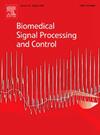先进综合多药靶点输液的同步药理学控制优化
IF 4.9
2区 医学
Q1 ENGINEERING, BIOMEDICAL
引用次数: 0
摘要
准确控制给药是安全麻醉的关键。靶控输注(TCI)系统使用药代动力学和药效学(PK/PD)模型给药,使静脉注射药物达到目标浓度。然而,TCI的操作仅限于单一药物,不考虑药物相互作用。剂量-反应相互作用(DRI)模型通过将共同效应表示为药剂浓度的函数来量化这种相互作用。我们介绍了一种新的多药输注给药方法——相互作用靶标控制输注(iTCI),该方法将共同给药药物的PK/PD模型及其相互作用结合为一个具有终端约束的最优非线性动态控制问题。iTCI的能力在不同的临床情况下使用不同的PK/PD模型,如施耐德和Eleveld用于异丙酚,Minto用于瑞芬太尼。结合DRI和PK/PD模型允许新的管理程序。结果表明:(1)与TCI相比,iTCI需要更小的给药体积才能同时达到相同的目标浓度。(2)它提供了最优的相互依存管理,既解决了浓度目标,也解决了效果目标。(3) iTCI对给药有额外的限制,包括沿等效条件(等孔)控制滴定或(4)直接限制血浆浓度水平。(5)与TCI不同,iTCI可以在控制策略中包含每种药物的不同作用(多个键),特别是与阿片类药物相关。iTCI是一种新的多功能开环多药输注范例,与传统的TCI解决方案相比,它允许更安全、更灵活的优化并发给药配置文件。它开辟了新的可能性,同时多种麻醉药控制管理的协同作用和影响被考虑在内。本文章由计算机程序翻译,如有差异,请以英文原文为准。

Simultaneous pharmacometric control optimization for advanced integrated multi-drug target infusions
Accurately controlling drug delivery is crucial for safe anesthesia. Target-controlled infusion (TCI) systems use pharmacokinetic and pharmacodynamic (PK/PD) models to administer intravenous agents to reach target concentrations. However, TCI’s operation is restricted to a single-drug, not accounting for drug interactions. Dose–response interaction (DRI) models quantify such interactions by representing shared effects as a function of agents’ concentrations. We introduce a new administering methodology for multi-drug infusions, interaction target-controlled infusion (iTCI), that combines the PK/PD models of the co-administered drugs and their interactions into a single optimal non-linear dynamic control problem with terminal constraints. The capabilities of the iTCI are shown in different clinical scenarios using different PK/PD models such as Schnider and Eleveld for propofol and Minto for remifentanil. Incorporating DRI and PK/PD models allows novel administration procedures. These show that: (1) iTCI requires lower administered volumes than TCI to simultaneously reach the same target concentrations. (2) It offers optimal interdependent administrations that address not only concentration targets but also effect targets. (3) iTCI comes with additional constraints on the administration, including controlled titrations along iso-effect conditions (isoboles) or (4) directly limiting plasma concentration levels. (5) Unlike TCI, iTCI can include in the control strategy different exerted effects (multiple ke0s) per drug, particularly relevant for opioids. The iTCI is a new versatile open-loop multi-drug infusion paradigm allowing safer and more flexible optimized concurrent administration profiles than traditional TCI solutions. It opens up new possibilities for simultaneous multi-anesthetics controlled administrations where synergies and effects are taken into consideration.
求助全文
通过发布文献求助,成功后即可免费获取论文全文。
去求助
来源期刊

Biomedical Signal Processing and Control
工程技术-工程:生物医学
CiteScore
9.80
自引率
13.70%
发文量
822
审稿时长
4 months
期刊介绍:
Biomedical Signal Processing and Control aims to provide a cross-disciplinary international forum for the interchange of information on research in the measurement and analysis of signals and images in clinical medicine and the biological sciences. Emphasis is placed on contributions dealing with the practical, applications-led research on the use of methods and devices in clinical diagnosis, patient monitoring and management.
Biomedical Signal Processing and Control reflects the main areas in which these methods are being used and developed at the interface of both engineering and clinical science. The scope of the journal is defined to include relevant review papers, technical notes, short communications and letters. Tutorial papers and special issues will also be published.
 求助内容:
求助内容: 应助结果提醒方式:
应助结果提醒方式:


